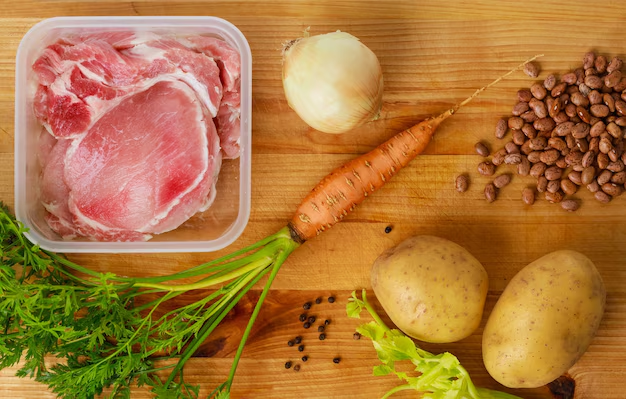How Long Can Luncheon Meat Survive In Your Fridge? A Comprehensive Guide
Luncheon meat, often viewed as a convenient staple, is loved for its adaptability and long shelf life. Whether it's stacked in sandwiches, diced into salads, or simply enjoyed on its own, this preserved delight indeed holds a special place. Yet, while its shelf presence is noteworthy when sealed, once opened, questions about its safety and freshness start surfacing. How long is luncheon meat good in the refrigerator? Let's unpack this topic from every conceivable angle so you can make informed choices about its storage and consumption.
Understanding Luncheon Meat: What Is It?
Luncheon meat generally refers to processed, canned meats like Spam, corned beef, and similar offerings. These meats are usually cured and precooked, making them safe for longer storage when sealed. Their convenience lies in their ready-to-eat nature; a pantry staple for busy households and camping aficionados alike.
However, this convenience does not translate to infinite freshness. Once opened, luncheon meat’s longevity becomes limited, necessitating awareness for safe consumption. Let's dive into the specifics.
How Long Does Luncheon Meat Last?
Unopened Luncheon Meat
When sealed properly, luncheon meat boasts impressive shelf stability. Thanks to its canning process which involves vacuum-sealing and sterilization, it can typically last in a pantry for 2 to 5 years. These figures depend heavily on the storage environment, such as maintaining a consistent, cool temperature away from direct sunlight.
Opened Luncheon Meat In The Refrigerator
Once you break the seal, a whole new timeline emerges. Opened luncheon meat needs refrigeration. The general consensus suggests that once opened, the meat is best consumed within 3 to 5 days.
- Day 1 to Day 3: Peak freshness.
- Day 4 to Day 5: Acceptable but start monitoring for any signs of spoilage.
Freezing Luncheon Meat
For extended longevity, freezing luncheon meat is a viable option. Properly stored in airtight containers or sealed freezer bags, it can last several months in the freezer. Although some might argue that freezing may slightly affect the texture, it does ensure you can enjoy your favorite meat without racing the expiration clock.
Here’s a quick visual guide:
| Condition | Storage Location | Duration |
|---|---|---|
| Unopened | Pantry | 2 - 5 years |
| Opened (Refrigerated) | Fridge | 3 - 5 days |
| Freezed | Freezer | Up to 3 months |
Signs of Spoilage: When to Say Goodbye
Food safety is paramount when it comes to consuming any kind of meat product. Properly assessing signs of spoilage in luncheon meat can prevent unwanted health risks. Here are some tell-tale signs that your luncheon meat may have overstayed its welcome:
- Color Changes: Any signs of greying or dulling could indicate spoilage.
- Slimy Texture: Stickiness or a slimy layer is a major warning.
- Off Odor: A sour or ammonia-like smell is your cue to discard.
- Mold: Sky’s the limit for colors – green, white, or black molds are a definitive no-go.
Best Practices for Storing Luncheon Meat
Whether you’ve opened lunch or dinner meat, or you’re keeping it sealed for an emergency, there are best practices to follow to maximize freshness and safety:
Unopened Cans
- Cool, Dark Area: Store in a pantry away from heat and sunlight.
- Check Seals: Periodically check can integrity; rust or dents can compromise the meat's safety.
Opened Cans
- Use Airtight Containers: Transfer any remaining meat to a proper container to minimize exposure to air.
- Date & Label: Mark the date when opened so you can keep track of its lifespan.
- Mind Temperature: Keep the fridge consistently below 40°F (4°C).
Freezing
- Slice Pre-Freezing: If possible, slice the meat for easier future use.
- Airtight Packaging: Double-bagging or using a vacuum sealer can reduce freezer burn.
FAQs on Luncheon Meat Storage
To help guide you beyond the basics, here are some frequently asked questions that provide additional clarity on luncheon meat storage:
Can I eat luncheon meat past its best-by date when unopened?
Certainly, provided the can's integrity is intact and it's stored properly, but proceed with caution—odor and visual checks are essential.
How can I improve the taste after freezing?
Thaw slowly in the refrigerator, then refresh by gently heating in a pan or serving with sauces to reinvigorate flavors.
Is home-canned luncheon meat similarly durable?
Home canning can extend meat life significantly; however, it’s imperative to adhere to rigorous canning standards to prevent contamination.
Wrapping Up Your Luncheon Meat Lesson
In exploring how long luncheon meat stays fresh in your refrigerator, we've unveiled not just the basic timelines but imparted key insights into optimal storage practices. Whether nestled in your pantry, chilling in your fridge, or freezing for future feasts—understanding its shelf life and the signs of spoilage empowers you to make healthier, waste-free choices.
In summary, to savor every delectable slice, remember these key points:
- 🔍 Stay vigilant for spoilage signs: Color, texture, smell, and mold are tell-tales.
- 🗓️ Keep track of opening dates: Proper dating helps in managing consumption.
- ❄️ When in doubt, freeze it: Freezing extends usability considerably with minimal quality loss.
- 🥶 Trust your senses, trust the fridge: Storing with awareness assures enjoyable meals devoid of health concerns.
By being attentive to these insights, your enjoyment of luncheon meat can continue resourcefully and safely.
